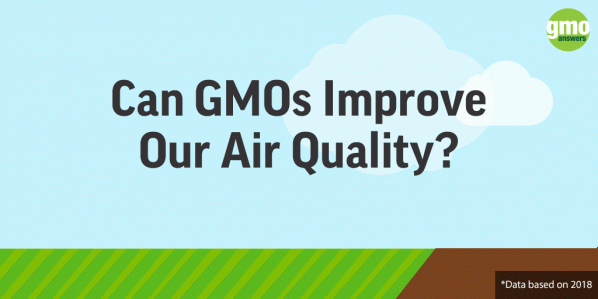Question
How can companies producing GMO plants confirm that their plants will not affect non-GMO plants? Could GMO plants cross with non-GMO plants? If so, has any testing occurred to know what the outcomes are and how they may affect people or other plants?
Submitted by: greekmiss
Answer
Expert response from Rod Herman
Senior Advisor, Biotechnology Regulatory Sciences Group, Regulatory Science and Government Affairs Department, Dow AgroSciences
Thursday, 10/10/2013 00:57
In addition to the response provided by Steve Savage, it may be helpful to know that technology developers conduct numerous years of studies on new GM plants in the field to assess whether the introduced GM trait impacts the “weediness” of the plant, relative to its non-GM counterparts.
In other words, we conduct studies and collect data to answer these questions: Is this GM plant more likely to become a weed? If the trait transfers to a non-GM relative, would it make those plants more aggressive or weedy? As Steve Savage notes, the closely related relatives that can successfully “mate” with a cultivated plant are very well known to breeders and help define what species of plants a GMO plant might cross with. Researchers use this information in assessing the potential impact that the GMO trait might have on the weediness of the sexually compatible, related species. So the range of potential outcomes is indeed finite and can be evaluated by developers and regulators.
This kind of weediness information is required under USDA’s regulations (7 CFR 340.6) and is assessed by the department prior to any decision regarding wide-scale or commercial use of the GM plant. The regulations state:
“Describe known and potential differences from the unmodified recipient organism that would substantiate that the regulated article [GMO plant] is unlikely to pose a greater plant pest risk than the unmodified organism, including but not limited to: weediness of the regulated article, impact on the weediness of any other plant with which it can interbreed.”
Furthermore, it is also important to note that GMO plants are simply a new variety of a crop—more specifically, a very slightly altered variety, much less so than a new variety bred by traditional means. For example, a GM corn hybrid may contain one or several transgenes among 50,000 native genes present in the same non-GM hybrid. A brand-new corn hybrid produced through traditional breeding would typically contain hundreds or thousands of different genes, compared with some other hybrids. However, all varieties of domestic corn can cross-breed. If one plants transgenic or non-transgenic field corn (the type grown on the vast number of acres and destined mostly for use as animal feed) near sweet corn, some pollen will fertilize ears of the sweet corn, decreasing its taste quality. This has always been the case. For this reason, and since sweet corn is a specialty crop compared with field corn, the responsibility for maintaining the purity of the sweet corn is with the sweet-corn farmer. Similarly, those who produce seed corn (or any other seed crop) are responsible for maintaining the purity for their specialty use. This is so because there are no safety issues associated with the cross-pollination among approved crops. Historically, in specialized production sectors, the growers and the rest of the value chain take responsibility for meeting any quality standards to address the market demand for that product, often through contractual arrangements and management practices. Management practices will be dependent on a number of factors, including the crop, the region and the growing environment, and will be consistent with commercial practices along the supply chain. All GM crops have undergone extensive safety testing and have been approved by government regulatory agencies, so safety is not an issue.
Answer
Expert response from Steve Savage
Consultant, Savage & Associates
Tuesday, 13/08/2013 17:26
Plants can only pollinate members of their own species or sometimes very closely related species. It is relatively easy to know whether there are any "outcrossing issues" with a new GM plant. This is one of the issues that the USDA considers whenever it approves of outdoor trials with new GM crops and when it makes the final "deregulation" decision.
Of course, GM versions of a crop can cross pollinate non-GM versions of the same crop, but this is nothing new to agriculture. For a very long time, it has been necessary to isolate seed production fields of various crops so that the seed will be of the pure, desired type. The size of the buffer needed is something well worked out, depending on the crop and how it is pollinated (self-fertilization, wind, insects, birds...). GM and non-GM seed production can be managed in the same way with regard to this issue.
For most fruit crops, the seed is never used for planting, so cross-pollination is never really an issue, whether the crop is non-GM or GM. For instance, blocks of different varieties of apples are commonly grown side-by-side (e.g. Fuji next to Gala), and bees may move from one variety to the other. Some of the seeds of those apples might represent a mix of the two varieties, but apples are propagated only by cuttings or bud grafting. The seed is discarded by the consumer and really shouldn't be eaten because it is cyanogenic.
All of these issues are very familiar to botanists, seed producers and others in agriculture.
How Do GMOs Benefit The Environment?



